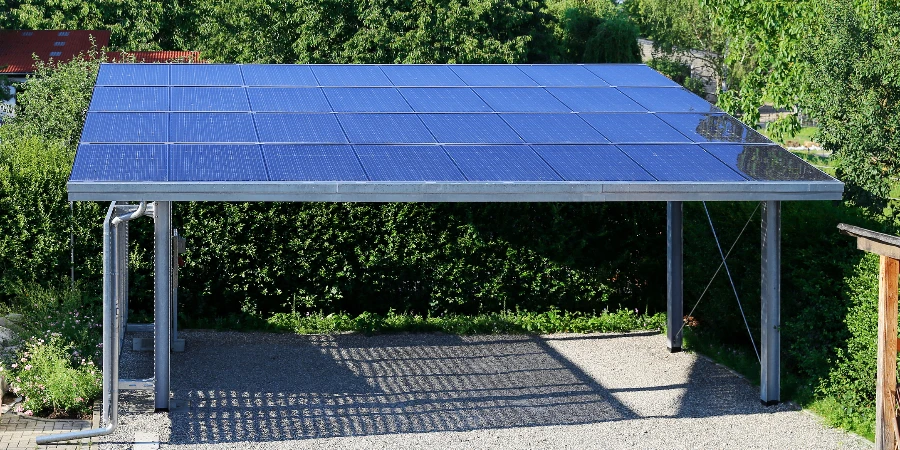When energy independence isn’t just a novel idea but a necessity, a sustainable-friendly product comes into the picture. Solar carports stand as a brilliant possibility that marries the functional purpose of carports with renewable power production offered by solar panels. This article endeavours to address the issues about the smart use of solar carports, the design considerations, the cost implication, the installation process, and the effect of this solution on the environment. Join us as we unpack the possibilities of solar carports to turn parking lots into energy power plants.
Table of Contents:
– What are solar carports and how do they work?
– Key benefits of installing a solar carport
– Design considerations for solar carports
– Understanding the cost and ROI of solar carports
– The environmental impact of solar carports
What are solar carports and how do they work?
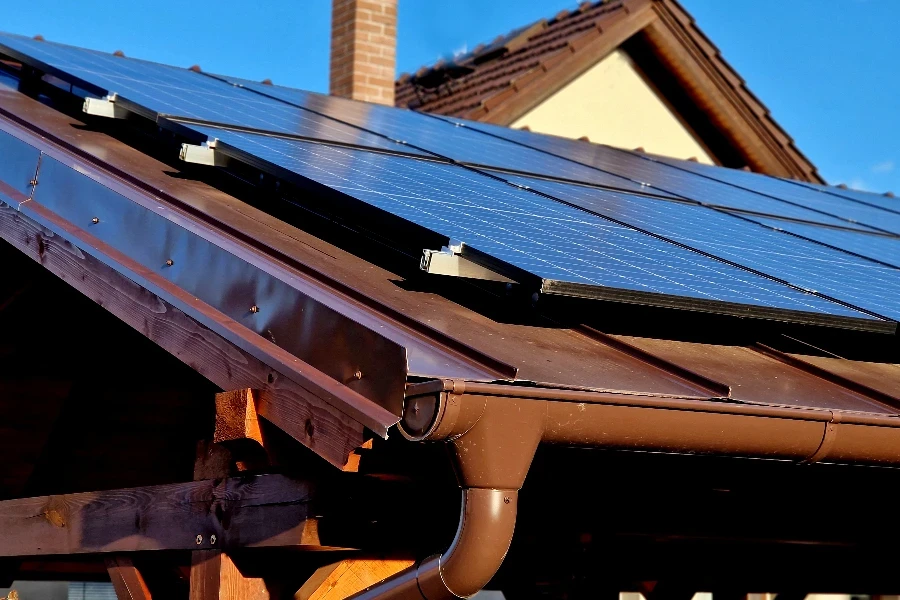
Solar carports are inventive structures that simultaneously shade parked cars and harvest solar energy. A solar carport in essence can be thought of as a regular carport with photovoltaic (PV) panels installed on the rooftop. Instead of using additional land, solar carports are placed in existing parking lots, making the electricity generated by them so much more efficient despite using the same amount of space. The electricity generated can be fed into the grid, an EV charging station, or nearby buildings, providing versatility to maximise use.
Key benefits of installing a solar carport
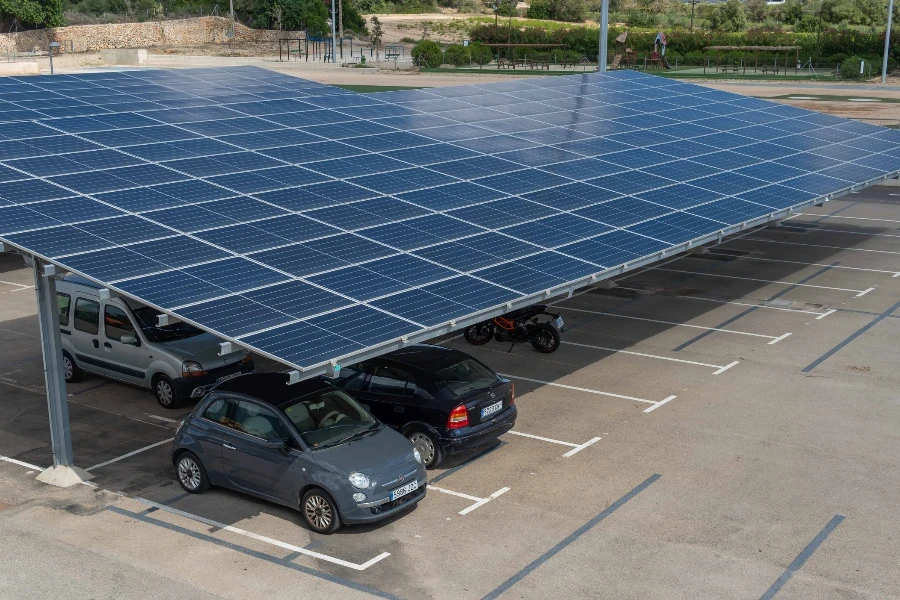
Solar carports can provide many benefits beyond the clean energy they produce. As an example, they provide covered parking, so you’ll never have to scrape ice off your windshield in the morning, will be less likely to get your car wet by driving through a sudden rainstorm, and won’t have to worry about your dashboard cracking from harmful UV radiation. Solar carports can also save you money on your electricity bill, since a solar electric system can completely offset your energy needs from the grid. Perhaps most attractive for a business, solar can raise your company’s green image, showing your employees and your customers that they are committed to sustainable practices.
Design considerations for solar carports
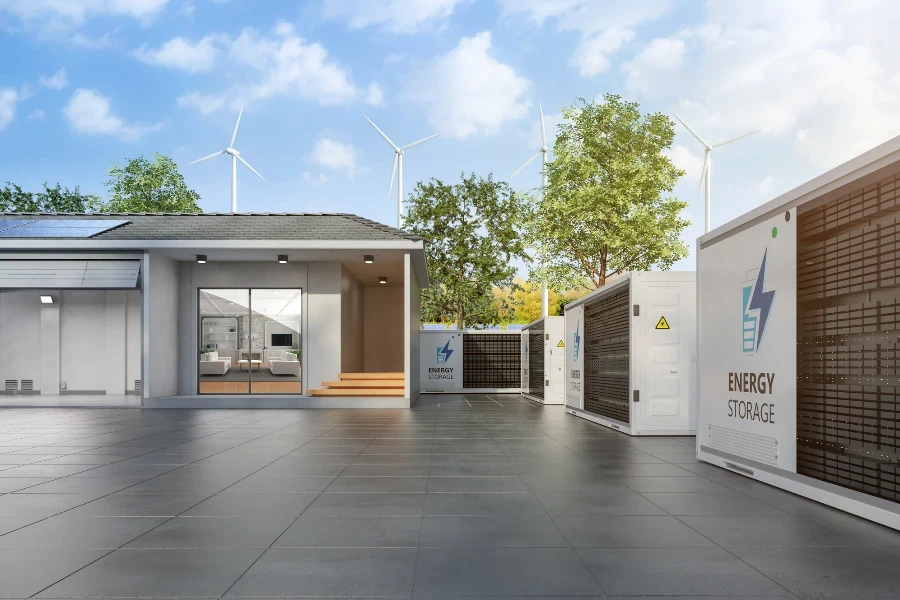
You to plan your solar car the best possible performance from the solar panels in terms of both efficiency and aesthetics. This includes making sure they’re at the right angle to the sun and tilted just right. Since conditions are not the same in every climate, you’ll want to make sure the structure is able to withstand the effects of your local weather conditions – eg, weatherproofing for heavy snow or high winds. Gaining even more utility and value from your solar carport, you can also consider adding light fixtures or EV charging stations to your solar carport.
Understanding the cost and ROI of solar carports

Once the upfront costs of the roof, either single carport or deck, plus additional features such as EV charger or shade sail have been covered, the ROI is excellent, with potential Government incentives or rebates helping to improving the actual payback period. Because the price of solar panels is constantly falling and electricity rates are rising steadily, solar carports are becoming an attractive option from an economic point of view.
The environmental impact of solar carports
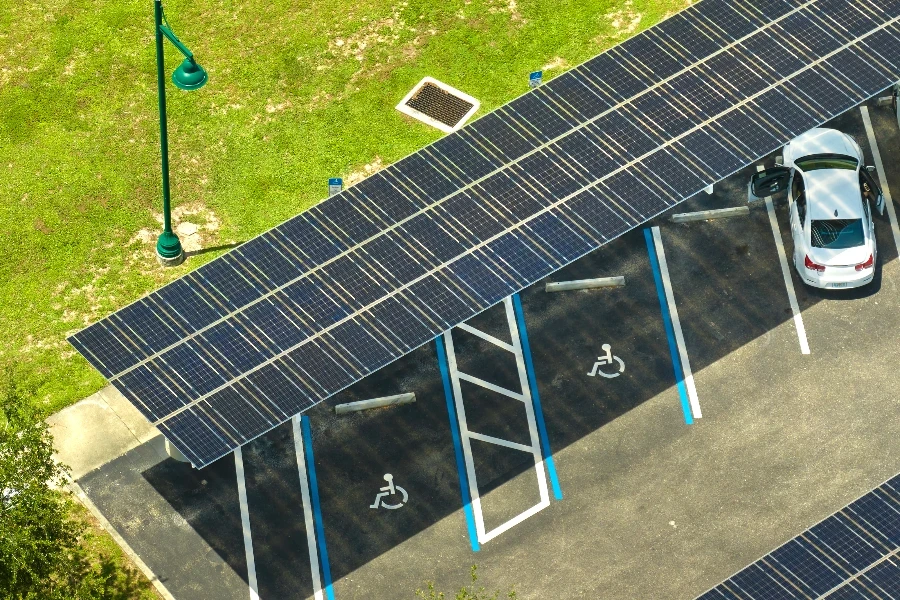
The positive impact of solar carports on the environment are numerous. Solar carports provide green energy that does not require the use of fossil fuels and it does not produce greenhouse gases. This means less energy consumption and thus less greenhouse gases entering the atmosphere. For people who are very concerned about climate change, solar carports are a great alternative to parking under gas burning lights.
Secondly, Solar carports are also a significant solution to the growing problem of gas emission due to the increase of electric cars. Instead of people going home, plugging in their car and charging it for their next commute or trip, solar carports provide charging stations that encourage the use of electric cars. This ongoing partnership between electric cars and solar carports will reduce the amount of greenhouse gases emitted by vehicles significantly.
Conclusion
Solar carports are a practical, green and novel solution providing shelter and electrical car charging, They also contribute to the larger solar-powered revolution that facilitates usage of renewable power. In this debate, we evaluate the main advantages of solar carports, discuss the design considerations, and hypothesise an economic model showing the significant return on investment. With the rise of renewable energy production, solar carports are the most promising solution for a more sustainable future.
By providing green power, free charging, reducing pollution and and sparing costs, solar car parks are the ideal solution for a sustainable transport. The material choice and design details will determine the carports’ effectiveness. It is crucial, therefore, to invest in the most efficient and long-lasting products to maximise the ROI.
As the world is increasingly transitioning to using solar energy, solar carports are an essential element for accommodating the large quantities of electric cars, while guaranteeing functionality and respecting the environment.
